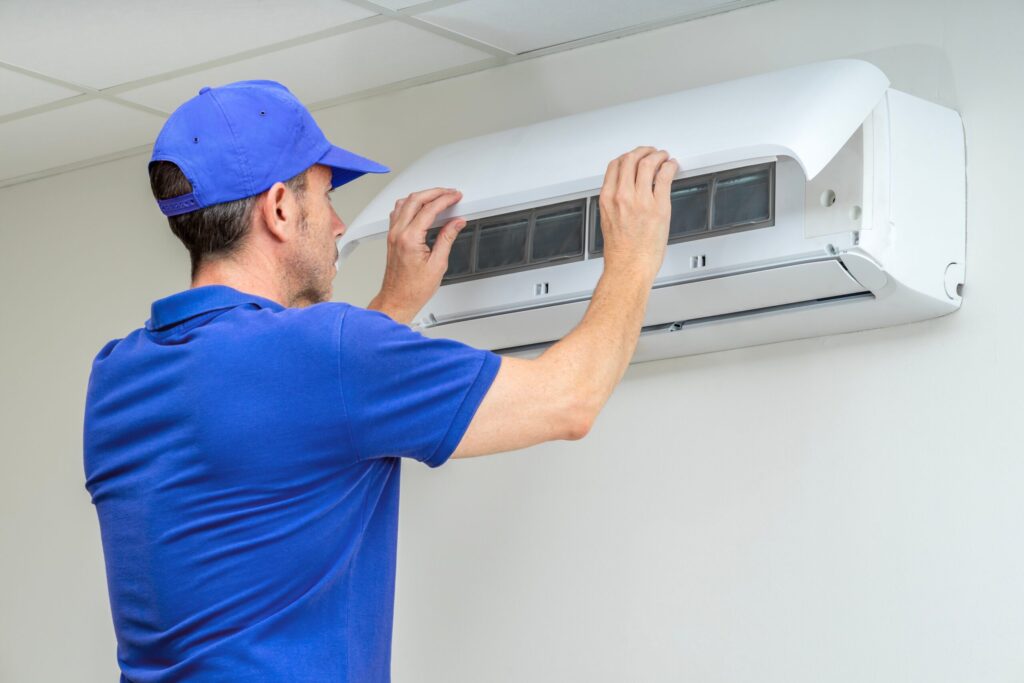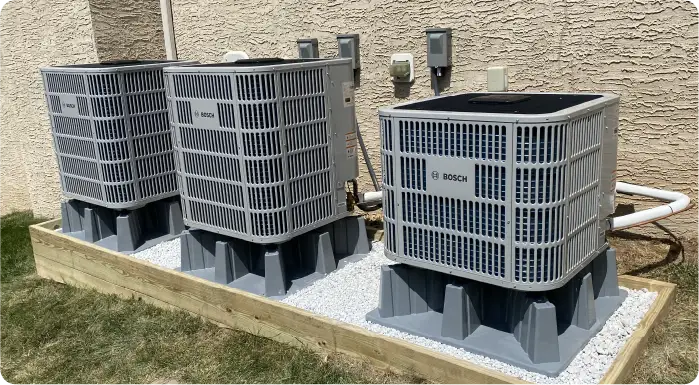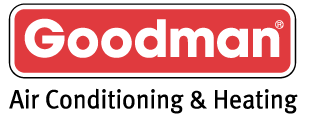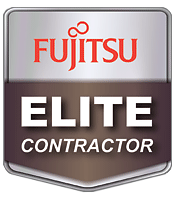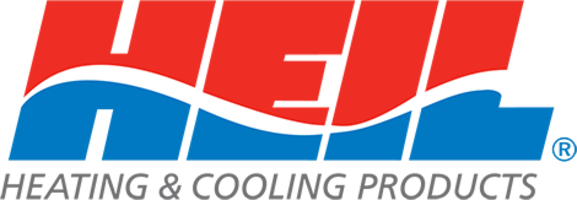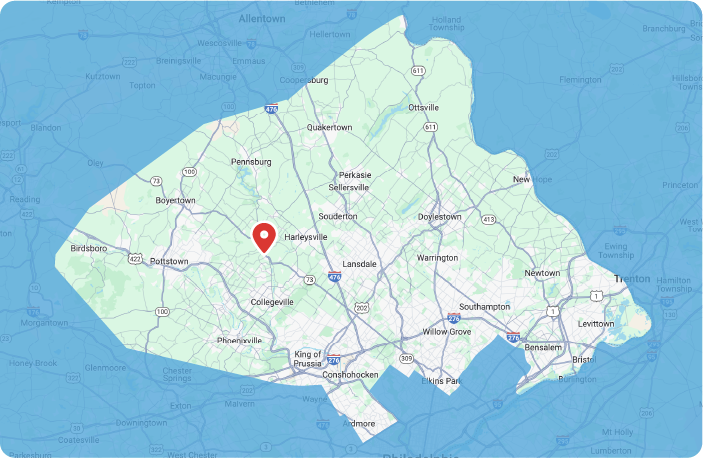You’ve probably sunk a good chunk of change into your home’s heating, ventilation, and air conditioning (HVAC) system. It’s a big investment, right? So, you naturally want it to last as long as possible. Many homeowners wonder about the real impact of regular care, specifically asking: how long does preventive maintenance extend life of HVAC units? Well, the answer might surprise you with just how much difference a little TLC can make. You’ll learn that knowing how long preventive maintenance extends the life of HVAC systems can save you headaches and money, and why understanding preventive maintenance is so important for your HVAC equipment. Contact Priority Comfort for HVAC maintenance in Montgomery County, PA.
Understanding HVAC Lifespans: The Baseline
Let’s talk about what you can typically expect from an HVAC system before considering extensive HVAC maintenance. Most modern air conditioners, furnaces, and heat pumps are built to last for a decent stretch. Think about 15 to 20 years for an air conditioner or a furnace; the average life for heat pumps might be a bit less because they work year-round, handling both heating and cooling.
But here’s the catch: those numbers often assume a certain level of care and that the HVAC equipment is in good working condition from the start. Without regular servicing, the life expectancy of your HVAC unit can decrease significantly. Imagine driving a car and never changing the oil; it’s a similar idea where neglect leads to premature failure and higher energy costs.
Ignoring your HVAC system isn’t just a gamble on its lifespan. It’s also a gamble on your comfort and your wallet. Neglected systems work harder, use more energy, and are prone to unexpected breakdowns, often at the worst times, diminishing your indoor air quality.
So, How Long Does Preventive Maintenance Extend Life of HVAC Systems?
This is the big question, isn’t it? Regular, professional preventive maintenance can significantly boost how long your HVAC equipment keeps running efficiently. Many experts suggest that consistent upkeep, a core part of any good HVAC preventive maintenance schedule, can extend an HVAC system’s life by as much as 30% to 50%. Some studies point to an average extension of several years beyond what you’d get without any preventative maintenance.
Think about it. If a system might last 12 years without care, adding 5 more years through a consistent maintenance routine is a huge win for cost savings. That’s five extra years before you face the massive expense of a full replacement. This significant extension is a primary reason why many homeowners choose to invest in annual or bi-annual tune-ups for their conditioning systems.
It’s not just about dodging early replacement; a maintained HVAC system also performs better throughout its extended life. You get more consistent temperature control, better indoor air, and lower energy bills. Achieving peak performance from your HVAC unit relies heavily on this ongoing care.
The Nitty-Gritty: What Maintenance Actually Does
Preventive maintenance, sometimes referred to as preventative maintenance, isn’t just a quick look-over. A good HVAC technician performs a series of important maintenance tasks and adjustments. Each of these helps your system achieve a longer lifespan, run smoother, and more efficiently.
Filters, Filters, Filters
You hear this one a lot, and for good reason; filter replacement is a cornerstone of HVAC maintenance. Dirty air filters are a primary culprit in HVAC problems. A clogged filter severely restricts HVAC airflow, making your system struggle to circulate air and maintain temperature control.
This strain can overheat components and lead to premature failure of your air conditioner or furnace. Regularly changing or cleaning your filters (monthly or quarterly, depending on the type and your home’s conditions) is the easiest thing you can do for your HVAC running smoothly. During professional maintenance, a technician will check this, but it’s a task you should also handle between visits to maintain good indoor air quality.
Cleaning Coils: Inside and Out
Your HVAC system has evaporator coils (inside) and condenser coils (usually outside for AC units and heat pumps). These HVAC components are vital for heat exchange, allowing your system to heat or cool your home. Over time, they gather dirt, dust, pollen, and outdoor debris.
Dirty coils can’t transfer heat effectively, which is crucial for energy efficient operation. This makes the system work harder, consume more energy, and wear out faster. Professional cleaning, often part of an annual tune-up and a key item on any maintenance checklist, keeps these coils in top shape, contributing to optimal performance.
Checking Electrical Connections
Loose or corroded electrical connections are not only a fire hazard but also cause inconsistent performance in your HVAC unit. They can damage major components like motors and compressors, leading to expensive repairs. An HVAC technician will inspect and tighten all electrical connections during routine maintenance.
They’ll also check capacitors and relays. These small parts are crucial for starting and running your system’s motors. Replacing them when they show wear is much cheaper than replacing an entire motor or compressor, making this one of the critical maintenance steps.
Lubricating Moving Parts
Motors, bearings, and other moving parts within your HVAC equipment need lubrication to operate smoothly and without undue friction. Lack of lubrication creates increased friction. This friction leads to increased wear and tear on HVAC components, higher energy use, and eventual breakdowns that could have been prevented.
A maintenance visit often includes lubricating these parts according to manufacturer specifications. This simple step reduces strain, minimizes noise, and prolongs their life considerably. It’s a small detail within the maintenance routine with a big impact on the overall working condition of the system.
Inspecting Condensate Drains
Air conditioners and high-efficiency furnaces produce condensation as a byproduct of their operation. This moisture is collected in a pan and drained away through a condensate line. If the condensate drain clogs with slime, mold, or debris, water can back up. This backup can lead to significant water damage to your home, mold growth inside the unit and ductwork, and even system shutdowns. Technicians clear and check the drain line during HVAC preventive maintenance. They make sure it’s functioning correctly to prevent nasty surprises and protect your indoor air.
Testing Thermostat Accuracy
Your thermostat is the brain of your HVAC system, directly impacting temperature control. If it’s not accurate or working right, your system won’t heat or cool your home properly or efficiently. This can lead to discomfort, wasted energy, and unnecessary strain on the HVAC system.
An HVAC technician will check its calibration and operation. They can also advise you on upgrading to a smart thermostat for better control, customized scheduling, and potential energy savings. Small adjustments here can make a big comfort difference and contribute to lower energy bills.
Verifying Refrigerant Levels (for ACs and Heat Pumps)
Air conditioners and heat pumps use refrigerants to absorb and release heat, cooling your home. If the refrigerant level is too low (due to a leak) or too high (if improperly charged), it impacts efficiency and cooling power. Critically, incorrect refrigerant levels can severely damage the compressor, which is one of the most expensive HVAC components to replace.
Technicians will check refrigerant levels and system pressures against manufacturer specifications. If levels are off, it often indicates a leak that needs to be found and repaired. Fixing leaks early protects your compressor, restores efficiency, and is important for reducing environmental impact, as some refrigerants can be harmful if released.
Beyond Lifespan: The Ripple Effect of Good Maintenance
We serve many local areas and can even provide HVAC maintenance in Ambler. Extending your HVAC system’s life is a major plus, representing significant cost savings. But regular HVAC preventive maintenance offers more great benefits. These advantages show up in your daily comfort, your monthly budget, and even your home’s air quality.
Improved Energy Efficiency
A well-maintained HVAC system, one that receives regular servicing, runs closer to its original factory specifications. This means it uses less energy to heat or cool your home, making it more energy efficient. Lower energy consumption directly translates to smaller utility bills and reduced energy costs over time.
Think about it: clean filters allow for proper HVAC airflow, clean coils facilitate efficient heat transfer, and properly lubricated parts reduce mechanical resistance. Your system doesn’t have to fight against itself to maintain the desired temperature. This efficiency boost can often save you enough money over a year to cover the cost of the maintenance itself, a point often highlighted by resources like the Department of Energy’s tips on saving energy.
Fewer Unexpected Breakdowns
HVAC systems rarely break down at convenient times; it’s usually during extreme weather. Regular maintenance helps catch small problems before they become big, expensive emergencies. This proactive approach is much better than reactive maintenance, which deals with problems after they cause a failure.
Technicians can spot worn parts or potential issues like minor leaks or electrical faults during a tune-up. Addressing these problems early prevents catastrophic failures and ensures your HVAC is running smoothly when you need it most. This means fewer surprise repair bills and less disruption to your life, allowing you to save money in the long run.
Better Indoor Air Quality
Your HVAC system circulates all the air in your home multiple times a day. If the system, including ductwork, is dirty, it can circulate dust, pet dander, pollen, allergens, and even mold spores. Regular cleaning and consistent filter replacement are vital for healthier indoor air and maintaining good indoor air quality.
Clean coils and a clear condensate drain also prevent mold and mildew growth within the air conditioner or furnace. This is particularly important for family members with allergies, asthma, or other respiratory issues. Better indoor air can contribute significantly to better health and overall comfort in your home.
Maintaining Warranty Coverage
Many HVAC manufacturers require proof of regular professional maintenance to keep your system’s warranty valid. If your air conditioning system breaks down due to neglect, your warranty claim might be denied. This could leave you footing the bill for major repairs that would have otherwise been covered.
Holding onto receipts and records from your HVAC maintenance appointments is a good practice. It shows you’ve taken steps to keep your HVAC equipment in good working order. This documentation can save you a lot of trouble if a warranty issue ever comes up, making regular maintenance crucial for peace of mind.
Factors That Still Influence HVAC Lifespan
While maintenance is a huge factor, other things also affect how long your HVAC lasts and its overall life expectancy. It’s good to keep these in mind, as you control some, but not all of them. Understanding these can help you make informed decisions regarding your HVAC units.
Quality of the Unit and Installation
Not all HVAC systems are created equal; the initial quality of the HVAC equipment matters. Higher-quality units from reputable brands often have more durable components and better construction. These may last longer and perform more reliably, even with similar maintenance schedules compared to budget options.
Proper installation is just as critical as the quality of the unit itself. An incorrectly sized or poorly installed system will struggle from day one, regardless of brand. It will operate inefficiently, experience more wear and tear, and ultimately wear out faster, no matter how well you maintain it; always use qualified, experienced technicians for installation.
Climate and Usage Patterns
If you live in an area with extreme temperatures, either very hot summers or very cold winters, your HVAC system will naturally work harder and more often. This constant operation puts more wear and tear on all components. Systems in milder climates tend to have a slightly longer average life due to less demand.
How you use your system also matters for its working condition. Constantly adjusting the thermostat by large amounts or running it at full blast non-stop can reduce its lifespan. Using a programmable or smart thermostat wisely can help balance comfort needs with system longevity and energy efficiency.
DIY vs. Professional Maintenance
Some basic maintenance steps, like routine filter replacement, are easy for homeowners to perform. You can also keep the area around your outdoor unit clear of leaves, grass clippings, and other debris to help airflow. These simple actions are helpful and encouraged.
But true preventive maintenance involves technical skills, specialized tools, and a deep understanding of how conditioning systems work. Checking electrical connections, refrigerant levels, internal mechanics, and combustion processes is best left to trained professionals. Attempting complex tasks yourself can sometimes do more harm than good, risk injury, or even void warranties, so professional maintenance is crucial.
Signs Your HVAC System Is Crying Out for Maintenance (or is Nearing its End)
Your HVAC system will often give you clues when it needs attention or is getting old. Paying attention to these signs can help you address problems early, before a total failure occurs.
This proactive approach can save money and prevent discomfort:
- Your energy bills are suddenly much higher than usual without a change in usage.
- The system makes strange noises like grinding, squealing, banging, or rattling.
- Some rooms are too hot while others are too cold, indicating uneven temperature control.
- The system struggles to reach or maintain the set temperature on your thermostat.
- You notice more dust in your home or poor, weak airflow from vents.
- The unit cycles on and off more frequently than it used to, known as short cycling.
- You see puddles of water or signs of leaks around the indoor or outdoor unit.
- Your system is older than 15 years and needs frequent, costly repairs.
If you notice several of these warning signs, it’s time to call a professional technician. They can assess if it’s a repairable issue stemming from lack of maintenance or if replacement is on the horizon. Sometimes, even with good preventive care, age just catches up with equipment.
The Cost of Maintenance Versus Replacement
It’s true, annual or bi-annual HVAC maintenance has an upfront cost. This typically ranges from $75 to $200 per visit for residential systems, depending on your system type, location, and the thoroughness of the service. Some people might see this as an expense they can skip to save money short-term.
But let’s compare that to the cost of replacing an entire HVAC system. A new air conditioner can cost between $3,500 and $7,500, or more, for an average home. A new furnace can be $2,500 to $6,500. A full HVAC replacement, including both heating and air conditioning systems, can easily reach $6,000 to $12,000 or even higher for high-efficiency models or complex installations.
Suddenly, that annual maintenance fee looks pretty small, representing significant cost savings over the unit’s lifespan. If regular maintenance extends your system’s life by even a few years, you’ve saved yourself thousands. This doesn’t even count the savings from improved energy efficiency and fewer repair bills along the way; it’s an investment that usually pays for itself many times over.
This table illustrates how preventative maintenance plan costs are minimal compared to potential major expenses.
What to Expect From a Professional HVAC Tune-Up
A thorough HVAC maintenance visit, often called a tune-up or regular servicing, usually takes an hour or two. The technician should be methodical and follow a comprehensive maintenance checklist. This helps confirm that nothing is missed and your system receives a complete inspection for optimal performance.
Typical maintenance tasks included in such a visit are:
- Inspecting and cleaning or replacing air filters, crucial for airflow and indoor air.
- Cleaning condenser and evaporator coils to ensure efficient heat transfer and lower energy costs.
- Checking and clearing condensate drains to prevent water damage and mold growth.
- Inspecting electrical connections, tightening them, and measuring voltage/current for safety and efficiency.
- Lubricating all moving parts, like motors and bearings, to reduce friction and wear.
- Checking thermostat settings and calibration for accurate temperature control.
- Inspecting ductwork for visible leaks or damage (though comprehensive duct sealing may be a separate service).
- Measuring system airflow to confirm it meets specifications for proper circulation.
- For gas furnaces: cleaning burners, checking gas pressure, and inspecting the heat exchanger for cracks, which is vital for safety and HVAC heating performance.
- For AC/heat pumps: checking refrigerant levels and pressures to confirm they are within the correct range for efficient cooling and to prevent compressor damage.
After the service, the technician should provide you with a detailed report. This report will outline what they did, any issues they found, and recommendations for repairs or future watch-items. This is a good time to ask questions about your unit and its condition.
Making Maintenance a Habit
The easiest way to get consistent maintenance is to sign up for a maintenance plan or service agreement. Many HVAC companies offer annual contracts. These often include one or two tune-ups per year (one for heating systems, one for air conditioning systems) to prepare for seasonal demands.
A preventative maintenance plan sometimes comes with added perks. You might get priority service if you have a breakdown, discounts on repairs or parts, or waived overtime fees. It takes the guesswork out of when to schedule routine maintenance and helps you stay on track with your maintenance routine.
For businesses, maintaining commercial systems is equally vital. Commercial office buildings and other facilities rely heavily on their HVAC for employee comfort and operational continuity. A specific commercial heating and cooling maintenance plan can prevent costly downtime and extend the life of these larger, more complex systems; services tailored to commercial needs are available from specialized providers.
Think of it like regular check-ups for your car or your health. It’s about prevention, not just reaction, helping your HVAC run smoothly. This proactive approach through a maintenance schedule is crucial to getting the most out of your HVAC investment and ensuring it remains in good working condition for years.
Conclusion
So, we return to our main question: how long does preventive maintenance extend the life of HVAC units? The evidence strongly suggests it adds significant time, often several years, to your system’s operational lifespan, allowing for a much longer life expectancy. Beyond just more years, you get a maintained system that runs more efficiently, breaks down less frequently, and provides better indoor air quality and comfort.
When you look at the relatively small cost of annual tune-ups against the massive expense of an early replacement or frequent emergency repairs, the value of understanding preventive maintenance becomes very clear. Investing in regular maintenance, following a maintenance checklist, and addressing problems early are some of the smartest things a homeowner or business manager can do for their HVAC system.
